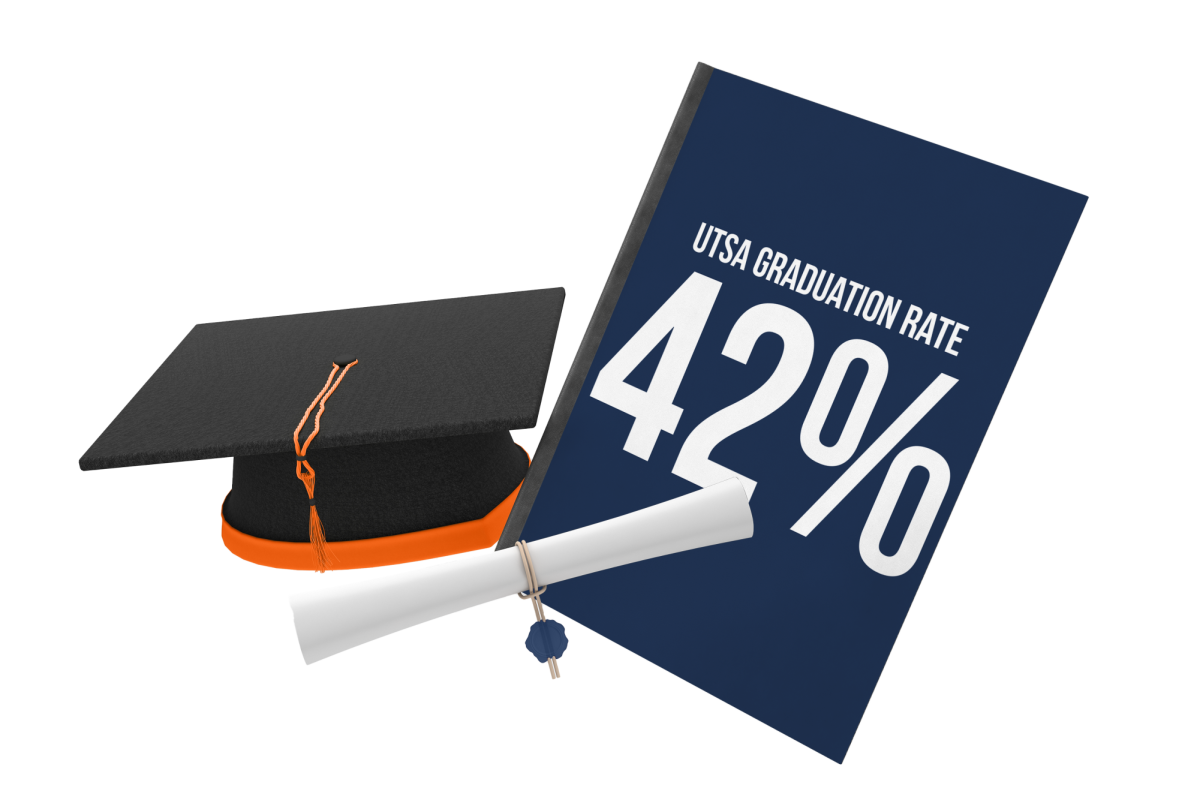As UTSA reached R1 status and began to be recognized nationally for several of its programs, its applicants’ competitiveness and the ratio output of graduates have been questioned. Although increasing from 6% in 2010, UTSA maintains a low graduation rate, listed online at 42%. In contrast to the high admission rate of 90%, the statistics have been the source of discontent among some of its students and troubles prospective ones.
Factors such as UT’s Coordinated Admissions Program (CAP) or, more recently, the impact of the COVID-19 Pandemic regularly bear the brunt of the blame. However, UTSA is in a unique situation that requires it to address the needs of its current population while considering the demands of shifting goals at many students’ expense.
In an op-ed for The Paisano, Senior Vice Provost for Student Success Dr. Tammy Wyatt shared, “UTSA students come from a variety of lived experiences that shape the time needed to complete their degrees, making our six-year graduation rate more reflective of our student success.”
The six-year graduation rate for the Fall 2017 cohort graduating in 2023 was 51%. The “variety of lived experiences” may refer to the fact that almost 60% of UTSA students are Hispanic or Latino, 45% are first-generation and over 75% work at least part-time.
These are all demographics that are statistically vulnerable to dropping out. Nationally, approximately 51% of Latinos finish college in six years, with the environment of higher education and affordability being the biggest hurdles to completion. Similar factors also haunt first-gen students and 56% do not earn a degree after six years. In reference to cost, the McKinsey Management Consulting Company released the following in 2020:
“Unsurprisingly, there is some correlation between the net cost to attend an institution and the likelihood its students graduate within six years. Often, more expensive degrees are indicative of more selective schools with a higher proportion of college-ready students with strong academic performance, as well as higher levels of student support.”
Increasing admission difficulty would require stricter requirements and reshape the environment on campus. The value of a UTSA education would inflate, reflecting the cost and magnifying the two conditions that currently affect graduation even more.
When President Eighmy assumed office in 2017, he shared a goal of reaching a 70% graduation rate, which at the time was at an even lower 37% for six years.
“We have a longer path to climb than others. We need to figure out quickly how to build on our momentum so that we can move the needle further than typically what other institutions have been doing,” Eighmy explained in an interview for the San Antonio Express-News. “We have a lot of work to do. There’s no point in blaming the CAP situation. It’s just a fact and data point we manage. We just need to move the needle more than we’re moving it.”
Since then, there have been several steps to “move the needle.” Programs like the First to Go & Graduate and dozens of Hispanic organizations and scholarships such as the Bold Promise’s tuition and fee coverage attempt to alleviate the burdens of college to increase graduation. The university is not apathetic to students taking extended amounts of time to graduate either: “UTSA expects students to graduate in a timely fashion and strongly encourages its undergraduates to set their goals to complete their baccalaureate degrees in four years, or if that is not feasible, not more than six years.”
UTSA regularly shares its pride as a Hispanic Serving Institution, commitments to supporting first-gen students, efforts to reduce costs for everyone, and particularly the last six years of work. On its ‘A Vision for UTSA Strategic Plan’ website, four tables show the three metrics upon which its progress is being measured: Student Success, Research and Excellence.
In 2023, UTSA set a target first-year retention rate of 81%, which they achieved by 95%. The six-year graduation rate goal was slightly above 49% and achieved by just under 94%. It is already at 91% progress of an 85% retention rate and 77.2% of the way to a 60% graduation rate by 2028.
For more information about UTSA’s strategic plan, visit utsa.edu/strategicplan/.









